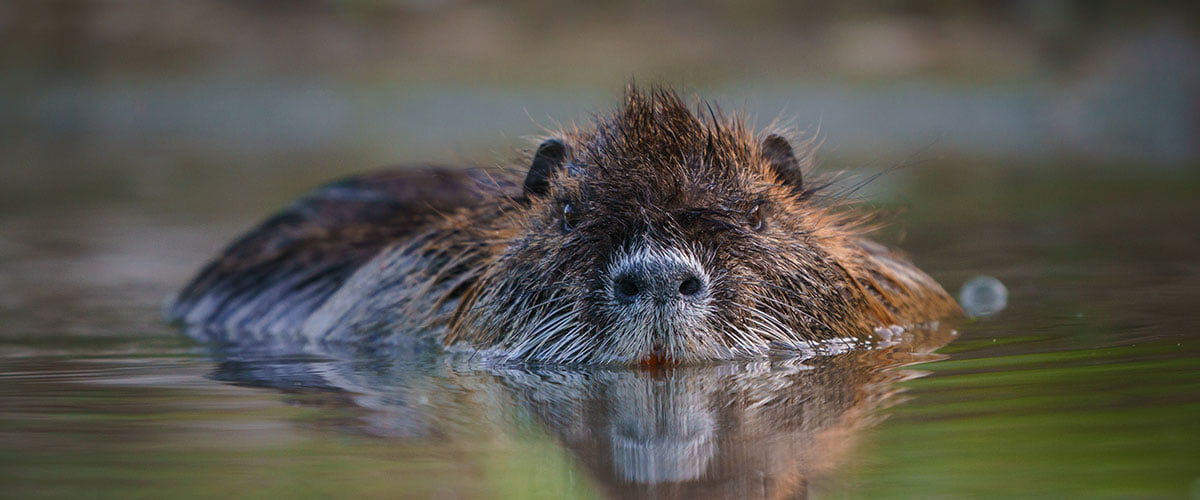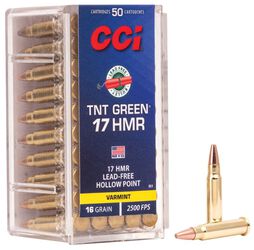
North America’s wetlands and marshes are vital habitat for a variety of native species, including waterfowl, but an imported relative of the common rat is threatening them. In the 1930s, the South American nutria was imported into the United States to bolster the fur market, but these hardy housecat-sized rodents began to expand their range and multiply quickly. When demand for fur began drying up, the nutria were left behind, and the damage they inflict on native habitat has only continued to grow.
However, North America’s rimfire-toting small game hunters can help turn the tide. Here’s how.
The Big Deal About A Little Rodent
The diminutive nutria, which weighs between 9 and 24 pounds, stays largely out of sight unless you’re near waterways and wetland areas. They spend their day eating vegetation and live in burrows they excavate near their aquatic homes.
The primary problem with nutria is they consume aquatic vegetation, increasing the odds that fragile coastal soils will be washed away during high water. Nutria live in marshlands on the Atlantic and Gulf Coasts of the United States, and they have been introduced into the Pacific Northwest. The habitats in which they survive are fragile, but they’re also vital for the survival of a wide range of species.
TNT Green 17 HMR
Unleash match-grade accuracy and explosive expansion on varmints with a non-lead bullet.
Buy Now
The U.S. Fish & Wildlife Service estimates wetlands cover about 5 percent of the land in the Lower 48 states, but 31 percent of U.S. plant species live in these confined areas. As with any environmental impact, the loss of native plants impacts the entire ecosystem. Waterfowl, amphibians, and birds rely on this habitat to survive and reproduce, and any loss of native wetlands poses a substantial risk to the biodiversity and overall health of these ecosystems.
Nutria also pose a threat to humans. Their feces and urine contaminate waterways, and nutria are a host for a variety of disease-causing bacteria and organisms. Studies have shown that nutria carry a nematode parasite that can infect humans who are exposed to the water, resulting in a most unpleasant condition known as “nutria itch.” Additionally, nutria carry fleas, ticks, lice, salmonella and other parasites and diseases to humans.
Know The Enemy
The first step to controlling nutria with hunting is identifying the species. In most states it’s legal to trap or shoot these animals, but it’s important to correctly identify nutria. They resemble native species such as muskrat and beaver, which are protected by state game laws, so you must make certain of your target before engaging in pest control efforts.
Nutria are rodents and look like oversized rats. A full-grown nutria can weigh more than 30 pounds, but the average weight is closer to half that figure. Their body measures up to 2 feet in length, and the round, hairless tail can measure up to 18 inches long. The round tail is the easiest way to discern between a nutria and beaver, which have flat paddle-like tails. It can be more difficult to discern nutria from muskrats, but there are notable differences. Muskrats are smaller than the average nutria and have tails which are laterally flattened compared to a nutria’s round tail. Nutria also have a distinctive patch of white fur around their mouths and large, visible orange front incisors, which they use to cut vegetation.
You can locate nutria in a variety of aquatic habitats, and while they prefer freshwater marshes they can also be found in brackish water near the coast. They’re prodigious feeders, cutting plant roots and digging up rhizomes as they clear patches of wetland habitat. Their burrows are often found along lake shores or spillways, and they thrive in ponds and impoundments where they compete with native wildlife. Nutria spend most of their day in burrows, but they do construct rafts of vegetation where they rest and feed.
Targeting Them
Controlling nutria can be difficult because these animals are wary and primarily nocturnal. Hunting waterways at night with a rimfire rifle can help control populations. Because nutria can reach upwards of 30 pounds, magnum cartridges like 17 HMR are ideal because they offer more energy and reach than 22 LR. It’s also important to consider that in many wetland areas where nutria thrive, regulations prohibit the use of lead-based ammunition. For that reason, hunters turn to lead-free ammo, with CCI’s TNT Green. This ammunition is excellent for nutria control because it combines explosive terminal performance with superb accuracy.
Hunting in the evening or at night (where legal) with a magnum rimfire loaded with TNT Green ammunition can be quite effective, but nutria are cautious animals that will dive underwater when disturbed. Their vision is not particularly acute, but their sense of hearing is outstanding. Moving slowly and listening for the telltale splash and feeding sounds of nutria is an effective hunting method.
Safety is critically important, and you must always know what’s beyond your target when firing. Because nutria live in or near watery environments it’s also important to note that you should never fire into water because of the risk of ricocheting bullets.
The idea of eating a water-dwelling rodent might seem unappealing, but there are many hunters who cook nutria and consider it a delicacy. It’s often used as a substitute for chicken or pork, and those who eat it regularly claim that it’s excellent table fare. Just be cautious when handling the meat to avoid parasites and, as with any wild game, make certain it is cooked to a safe internal temperature.